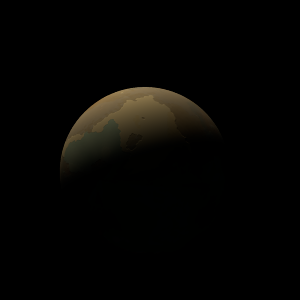|
|
Space Astro
|
Info for exoplanet "Thee-eu"
| Scientific (actual) data |
|---|
| Name | Kepler-209 c |
| Planet status | Confirmed |
| Radius | 0.277 |
| Orbital period | 41.7499 |
| Semi major axis | 0.231 |
| Discovered | 2014 |
| Updated | 2021-02-05 |
| Tconj | 2454990 |
| Impact parameter | 0.58 |
| Publication | Announced on a website |
| Detection type | Primary Transit |
| Alternate names | 2MASS J19244068+4238269 c, K00672.02, KIC 7115785 c, KOI-672 c, KOI-672.02, WISE J192440.67+423826.7 c |
| Star name | Kepler-209 |
| Right ascension | 291.17° |
| Declination | 42.64° |
| Mag j | 12.797 |
| Mag h | 12.432 |
| Mag k | 12.362 |
| Star distance | 586.68 |
| Star metallicity | 0.008 |
| Star radius | 0.94 |
| Star temperature | 5513 |
| Star alternate names | 2MASS J19244068+4238269, KIC 7115785, KOI-672, WISE J192440.67+423826.7 |
| Wikipedia article | Kepler-209 c |
Back
| |
| Fictional info (?) |
|---|
| Suggested name | Thee-eu |
| Planet type | Cold planet |
| It is a cold planet planet with a mass one-thousandth that of Kepler-209, but two-and-a-half times that of all the other planets in its solar system combined. It is the coldest planetary atmosphere in its solar system, with a minimum temperature of 38°K (-235°C), and has a complex, layered cloud structure with methane thought to make up the lowest clouds, and oxygen the uppermost layer of clouds.
It is radically different from Earth in other respects. It may have had water oceans in the past, but these would have vaporized as the temperature rose due to a runaway greenhouse effect.
The outer atmosphere is visibly segregated into several bands at different latitudes, resulting in turbulence and storms along their interacting boundaries.
The dark surface is mostly full of friendly ultra advanced bacteria known to feed close to volcanos while seeking smaller pray. Most Rosari-raq are closely related to the Dilme Mepan Tea but have fur and vary in size from 40 to 50 meters. The Rosari-raq can survive temperatures from 140 to 200°C and also extreme gravity which is common near the poles. |
| Estimated population | 800000000 |
| Atmosphere | Oxygen | 65% |
| Methane | 34% |
| Water | 0.061% |
| Carbon dioxide | 0.037% |
| Atmospheric pressure | 2.9 bar |
 |
| No known satellites |
| Google search for Thee-eu |
|
Website by Joachim Michaelis
|
|
|
|